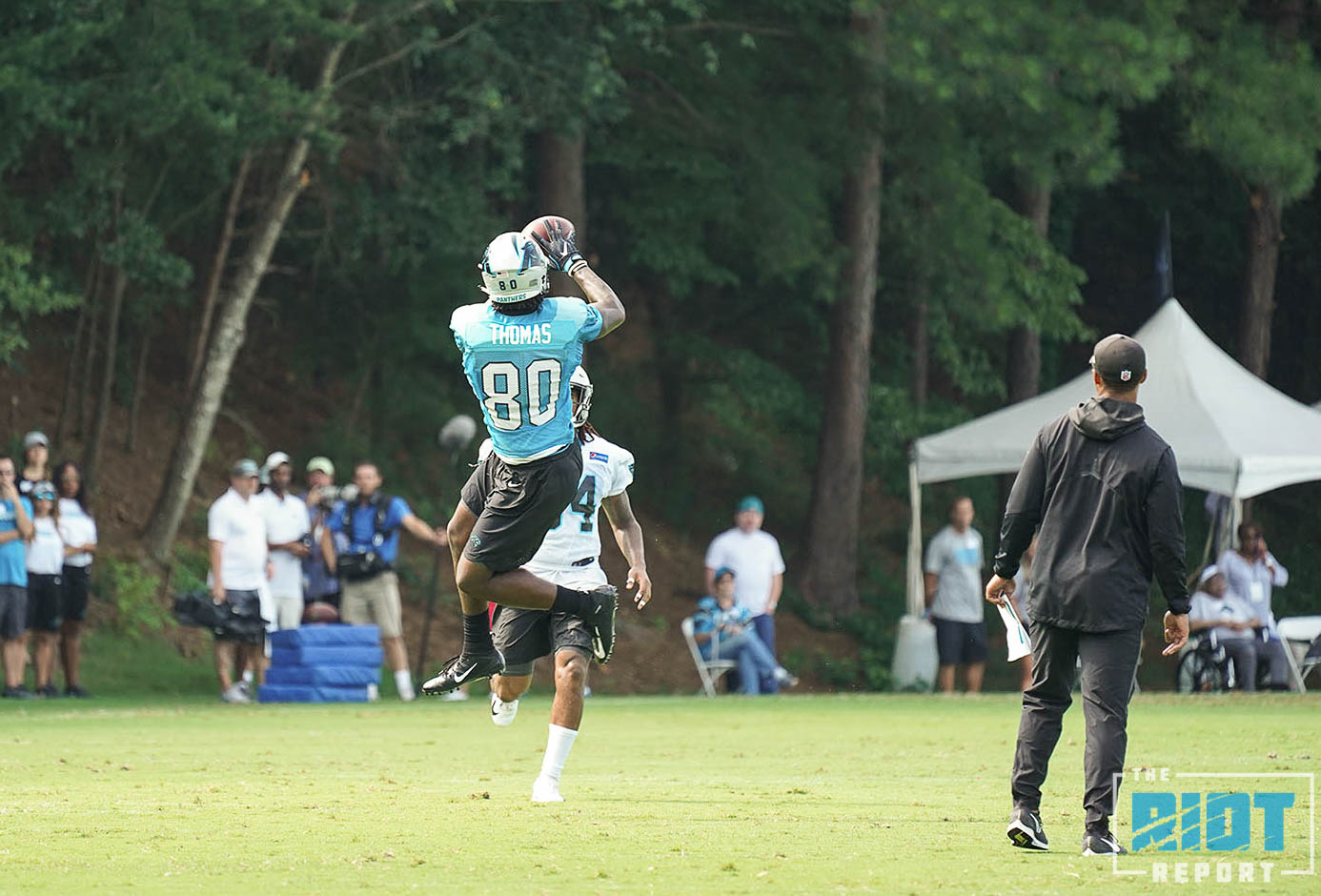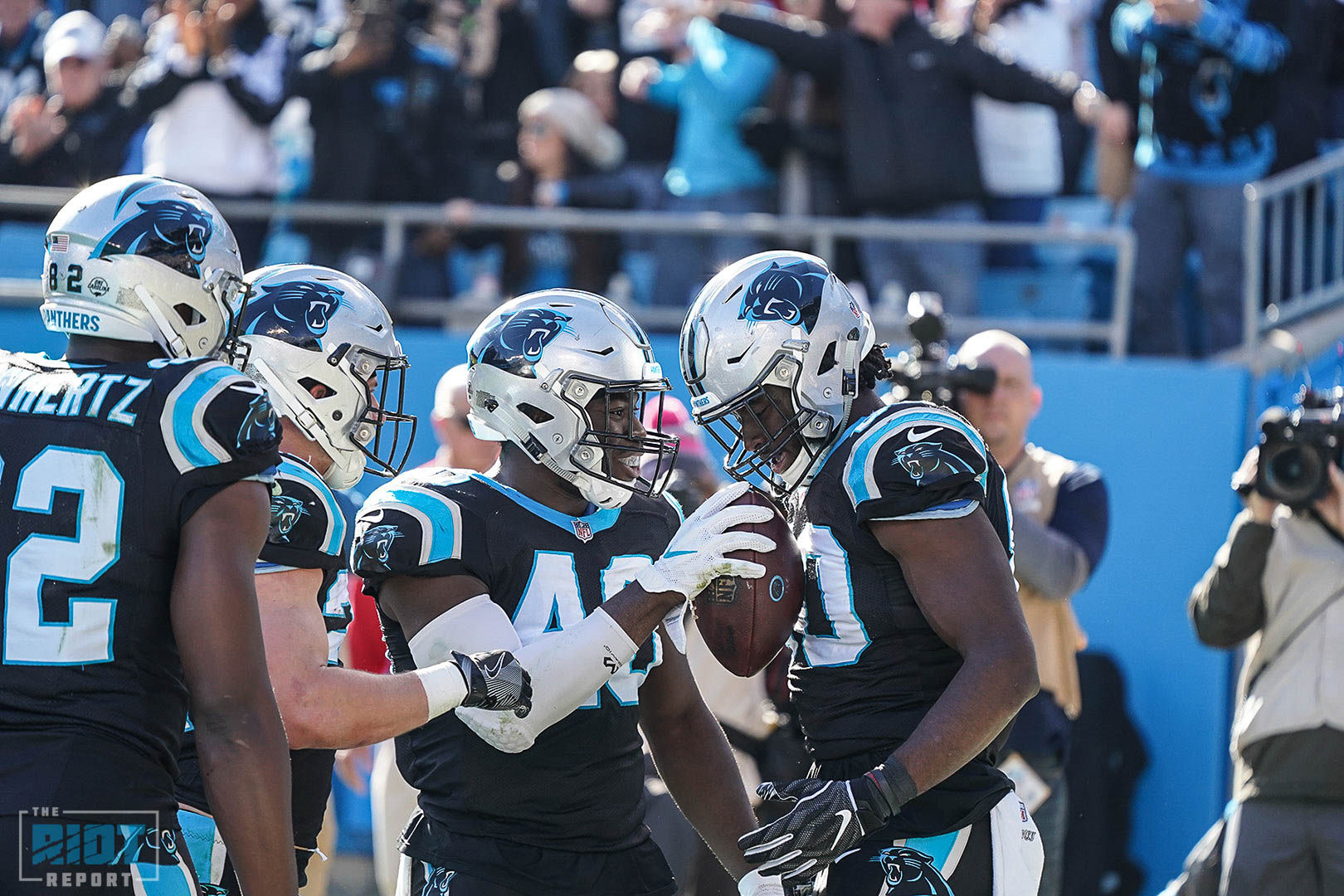Three TE Formations
These two combinations accounted for all of thirteen snaps over the three games, and given these limited numbers it’s hard to take too much from this data, but here it is:
| Situation | Week 5 Snaps | Week 9 Snaps | Week 14 Snaps | Total Snaps |
|---|---|---|---|---|
| 1st-and-10 | 3 | 1 | 0 | 4 |
| 1st-and-1 | 0 | 0 | 1 | 1 |
| 2nd-and-1 | 0 | 0 | 1 | 1 |
| 2nd-and-3 | 1 | 0 | 0 | 1 |
| 2nd-and-14 | 1 | 0 | 0 | 1 |
| 3rd-and-1 | 1 | 2 | 1 | 4 |
| 4th-and-1 | 0 | 0 | 1 | 1 |
It’s worth noting that the use of the three TE set on 2nd-and-14 – and on one of the 1st-and-10s in fact – came with the Panthers backed up against their own goal line, but with those taken into account, the clear pattern from the above data is that the Panthers tend to use these formations in short yardage situations, with seven of the thirteen instances coming on X-and-1. It’s also worth noting that the majority (77%) of the snaps out of these formations were runs, with the three passes all coming on either third or fourth down off hard play-action.
Essentially, the Panthers only really use these three-TE sets when they are either right on their own goal line and want to punch out some breathing room or when they are in a short yardage situation and want to either grind out a hard yard or two or run a PA play off a hard run fake.
Based on this information, the Panthers only kept pace with the chains on 40% of their running plays out of these formations, and while the short yardage nature of their usage does limit their efficiency, the fact that averaged just 1.9 yards-per-carry from three-TE formations during these three games suggests the Panthers might want to examine how they look to run the ball out of these formations.

The final thing to note about these three-TE formations is what combinations of players they used on these plays. For the most part, with Olsen out, it was Thomas, Manhertz and Armah, but with Olsen in the lineup against the Lions, they used both Thomas and Armah in combination with Manhertz and Olsen – although given this constituted all of three plays, it’s hard to make much of this.
Two TE Formations
| Situation | Week 5 Snaps | Week 9 Snaps | Week 14 Snaps | Total Snaps |
|---|---|---|---|---|
| 1st-and-10 | 6 | 3 | 2 | 11 |
| 2nd-and-short | 1 | 1 | 0 | 2 |
| 2nd-and-long | 3 | 3 | 2 | 8 |
| 3rd-and-1 | 0 | 0 | 1 | 1 |
From looking at the situational data, two things stick out: first, that the Panthers used these two tight-end formations largely on first down and long second downs. They did use them occasionally on short second and third downs, but really this wasn’t a grouping they went to when they needed to move the ball.
The other thing of note is that this grouping became less common as the season went on, with Greg Olsen’s return not appearing to move the needle hugely either way. It’s not clear based on this sample size which of these numbers was more anomalous, but it doesn’t appear that this is major part of what the Panthers want to do going forward – an interesting development considering both Olsen and Thomas are on the roster.

As with the three-TE formations, the Panthers predominantly used these sets to run the ball, doing so over 60% of the time. Chris Manhertz was the only TE to be used in all of the two-TE snaps, where he was used as either a run blocker or a pass protector over 90% of the time. Similarly, of the three snaps where Alex Armah was used in a two-TE set, he was exclusively used as either a run blocker or a pass protector. In fact, of the 22 plays in which the Panthers put two TEs on the field, on only two was both of them used as a blocker – both being plays against the Giants with Manhertz and Armah on the field.
In terms of how the Panthers fared from these formations, they did actually run the ball quite well, especially with Manhertz and Thomas blocking together where they managed to average five yards-per-carry, but struggled to do much in the pass game, completing less than 65% of attempts and averaging under six yards-per-completion.
In general, the Panthers used these formations as a way of running the ball on early downs, and while they did do this relatively effectively, given their struggles to pass the ball out of these sets and with limited explosive runs being generated – just two of the 14 carries gained ten yards or more and none more than 13 – it shouldn’t be hugely surprising that these formations were used less and less as the season went on.



